Elena Bellodi
Multivariate Time Series Anomaly Detection in Industry 5.0
Mar 20, 2025

Abstract:Industry5.0 environments present a critical need for effective anomaly detection methods that can indicate equipment malfunctions, process inefficiencies, or potential safety hazards. The ever-increasing sensorization of manufacturing lines makes processes more observable, but also poses the challenge of continuously analyzing vast amounts of multivariate time series data. These challenges include data quality since data may contain noise, be unlabeled or even mislabeled. A promising approach consists of combining an embedding model with other Machine Learning algorithms to enhance the overall performance in detecting anomalies. Moreover, representing time series as vectors brings many advantages like higher flexibility and improved ability to capture complex temporal dependencies. We tested our solution in a real industrial use case, using data collected from a Bonfiglioli plant. The results demonstrate that, unlike traditional reconstruction-based autoencoders, which often struggle in the presence of sporadic noise, our embedding-based framework maintains high performance across various noise conditions.
Solving Decision Theory Problems with Probabilistic Answer Set Programming
Aug 21, 2024Abstract:Solving a decision theory problem usually involves finding the actions, among a set of possible ones, which optimize the expected reward, possibly accounting for the uncertainty of the environment. In this paper, we introduce the possibility to encode decision theory problems with Probabilistic Answer Set Programming under the credal semantics via decision atoms and utility attributes. To solve the task we propose an algorithm based on three layers of Algebraic Model Counting, that we test on several synthetic datasets against an algorithm that adopts answer set enumeration. Empirical results show that our algorithm can manage non trivial instances of programs in a reasonable amount of time. Under consideration in Theory and Practice of Logic Programming (TPLP).
Non-ground Abductive Logic Programming with Probabilistic Integrity Constraints
Aug 06, 2021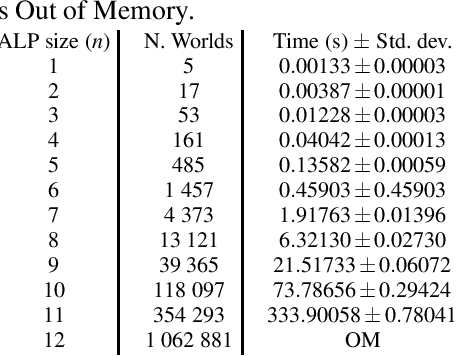
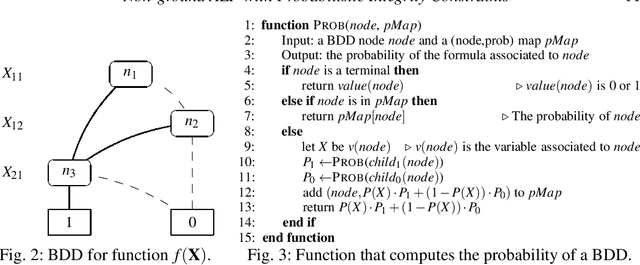
Abstract:Uncertain information is being taken into account in an increasing number of application fields. In the meantime, abduction has been proved a powerful tool for handling hypothetical reasoning and incomplete knowledge. Probabilistic logical models are a suitable framework to handle uncertain information, and in the last decade many probabilistic logical languages have been proposed, as well as inference and learning systems for them. In the realm of Abductive Logic Programming (ALP), a variety of proof procedures have been defined as well. In this paper, we consider a richer logic language, coping with probabilistic abduction with variables. In particular, we consider an ALP program enriched with integrity constraints `a la IFF, possibly annotated with a probability value. We first present the overall abductive language, and its semantics according to the Distribution Semantics. We then introduce a proof procedure, obtained by extending one previously presented, and prove its soundness and completeness.
A Framework for Reasoning on Probabilistic Description Logics
Oct 02, 2020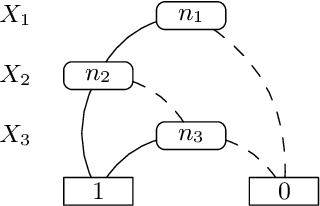


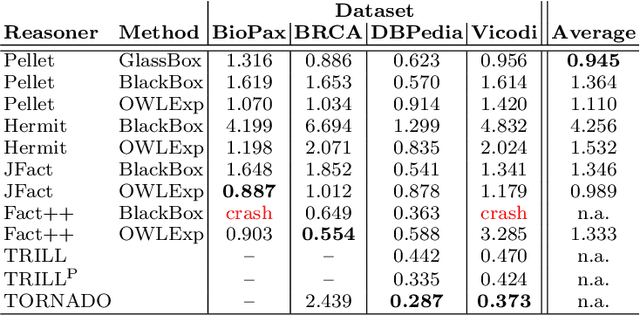
Abstract:While there exist several reasoners for Description Logics, very few of them can cope with uncertainty. BUNDLE is an inference framework that can exploit several OWL (non-probabilistic) reasoners to perform inference over Probabilistic Description Logics. In this chapter, we report the latest advances implemented in BUNDLE. In particular, BUNDLE can now interface with the reasoners of the TRILL system, thus providing a uniform method to execute probabilistic queries using different settings. BUNDLE can be easily extended and can be used either as a standalone desktop application or as a library in OWL API-based applications that need to reason over Probabilistic Description Logics. The reasoning performance heavily depends on the reasoner and method used to compute the probability. We provide a comparison of the different reasoning settings on several datasets.
MAP Inference for Probabilistic Logic Programming
Sep 01, 2020
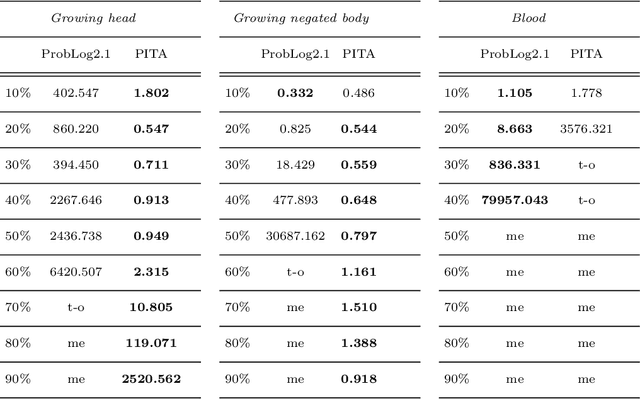
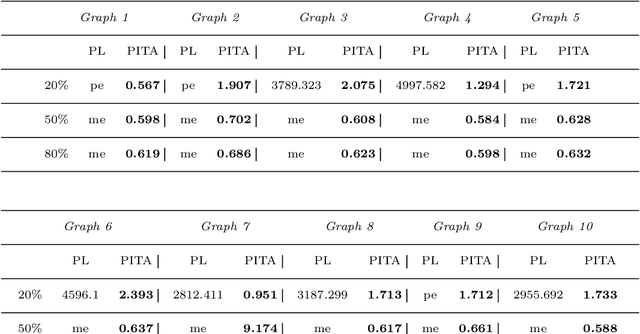
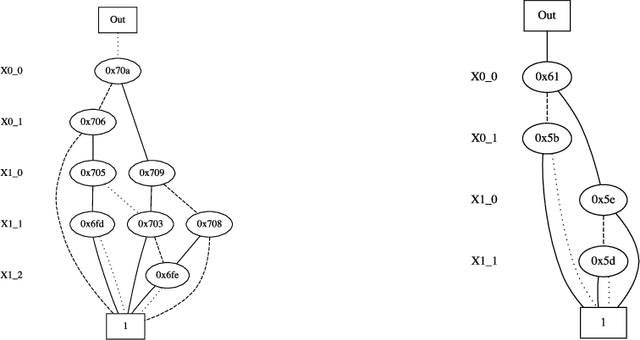
Abstract:In Probabilistic Logic Programming (PLP) the most commonly studied inference task is to compute the marginal probability of a query given a program. In this paper, we consider two other important tasks in the PLP setting: the Maximum-A-Posteriori (MAP) inference task, which determines the most likely values for a subset of the random variables given evidence on other variables, and the Most Probable Explanation (MPE) task, the instance of MAP where the query variables are the complement of the evidence variables. We present a novel algorithm, included in the PITA reasoner, which tackles these tasks by representing each problem as a Binary Decision Diagram and applying a dynamic programming procedure on it. We compare our algorithm with the version of ProbLog that admits annotated disjunctions and can perform MAP and MPE inference. Experiments on several synthetic datasets show that PITA outperforms ProbLog in many cases.
Probabilistic DL Reasoning with Pinpointing Formulas: A Prolog-based Approach
Sep 17, 2018
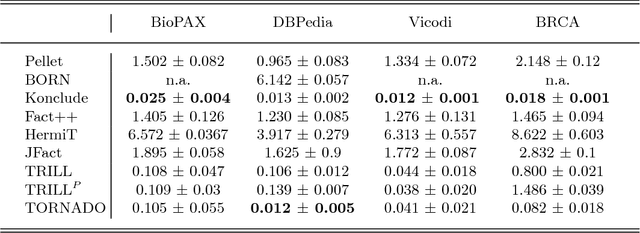

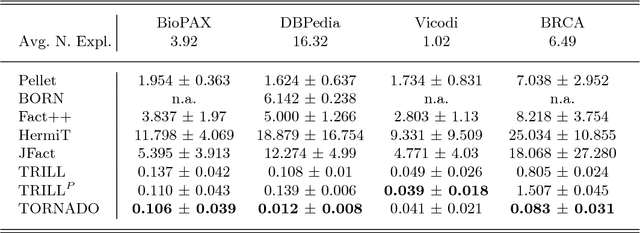
Abstract:When modeling real world domains we have to deal with information that is incomplete or that comes from sources with different trust levels. This motivates the need for managing uncertainty in the Semantic Web. To this purpose, we introduced a probabilistic semantics, named DISPONTE, in order to combine description logics with probability theory. The probability of a query can be then computed from the set of its explanations by building a Binary Decision Diagram (BDD). The set of explanations can be found using the tableau algorithm, which has to handle non-determinism. Prolog, with its efficient handling of non-determinism, is suitable for implementing the tableau algorithm. TRILL and TRILLP are systems offering a Prolog implementation of the tableau algorithm. TRILLP builds a pinpointing formula, that compactly represents the set of explanations and can be directly translated into a BDD. Both reasoners were shown to outperform state-of-the-art DL reasoners. In this paper, we present an improvement of TRILLP, named TORNADO, in which the BDD is directly built during the construction of the tableau, further speeding up the overall inference process. An experimental comparison shows the effectiveness of TORNADO. All systems can be tried online in the TRILL on SWISH web application at http://trill.ml.unife.it/.
Lifted Variable Elimination for Probabilistic Logic Programming
Oct 10, 2014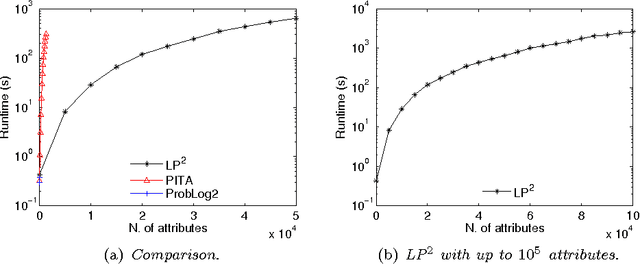
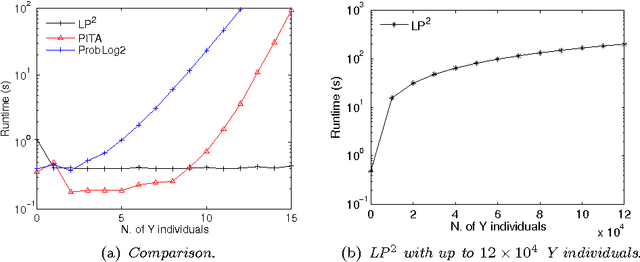
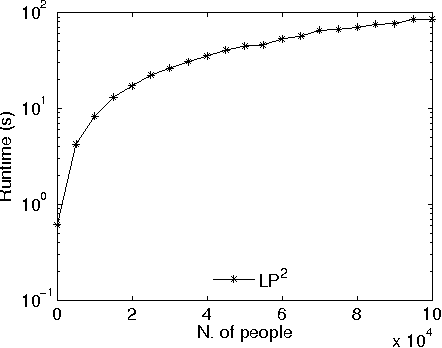
Abstract:Lifted inference has been proposed for various probabilistic logical frameworks in order to compute the probability of queries in a time that depends on the size of the domains of the random variables rather than the number of instances. Even if various authors have underlined its importance for probabilistic logic programming (PLP), lifted inference has been applied up to now only to relational languages outside of logic programming. In this paper we adapt Generalized Counting First Order Variable Elimination (GC-FOVE) to the problem of computing the probability of queries to probabilistic logic programs under the distribution semantics. In particular, we extend the Prolog Factor Language (PFL) to include two new types of factors that are needed for representing ProbLog programs. These factors take into account the existing causal independence relationships among random variables and are managed by the extension to variable elimination proposed by Zhang and Poole for dealing with convergent variables and heterogeneous factors. Two new operators are added to GC-FOVE for treating heterogeneous factors. The resulting algorithm, called LP$^2$ for Lifted Probabilistic Logic Programming, has been implemented by modifying the PFL implementation of GC-FOVE and tested on three benchmarks for lifted inference. A comparison with PITA and ProbLog2 shows the potential of the approach.
Structure Learning of Probabilistic Logic Programs by Searching the Clause Space
Sep 09, 2013



Abstract:Learning probabilistic logic programming languages is receiving an increasing attention and systems are available for learning the parameters (PRISM, LeProbLog, LFI-ProbLog and EMBLEM) or both the structure and the parameters (SEM-CP-logic and SLIPCASE) of these languages. In this paper we present the algorithm SLIPCOVER for "Structure LearnIng of Probabilistic logic programs by searChing OVER the clause space". It performs a beam search in the space of probabilistic clauses and a greedy search in the space of theories, using the log likelihood of the data as the guiding heuristics. To estimate the log likelihood SLIPCOVER performs Expectation Maximization with EMBLEM. The algorithm has been tested on five real world datasets and compared with SLIPCASE, SEM-CP-logic, Aleph and two algorithms for learning Markov Logic Networks (Learning using Structural Motifs (LSM) and ALEPH++ExactL1). SLIPCOVER achieves higher areas under the precision-recall and ROC curves in most cases.
 Add to Chrome
Add to Chrome Add to Firefox
Add to Firefox Add to Edge
Add to Edge